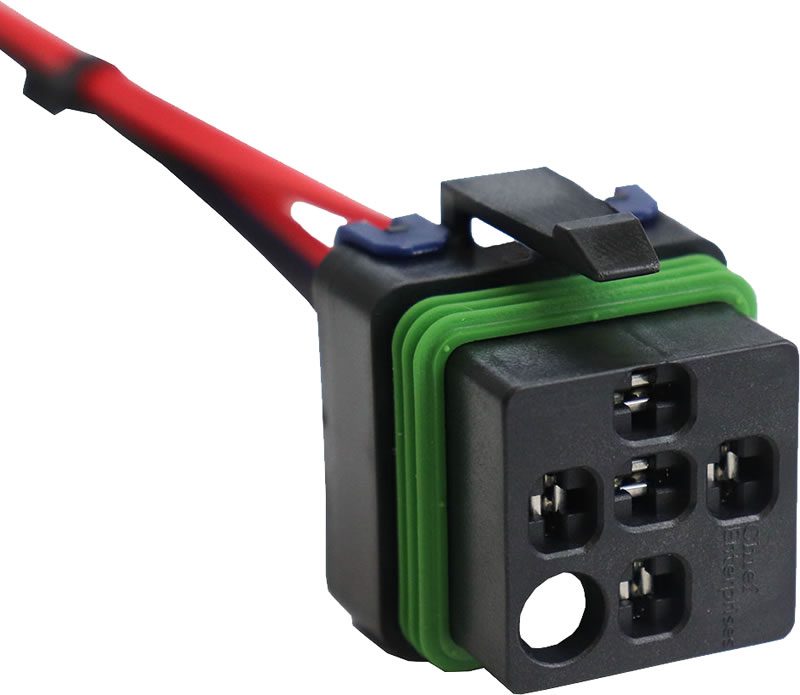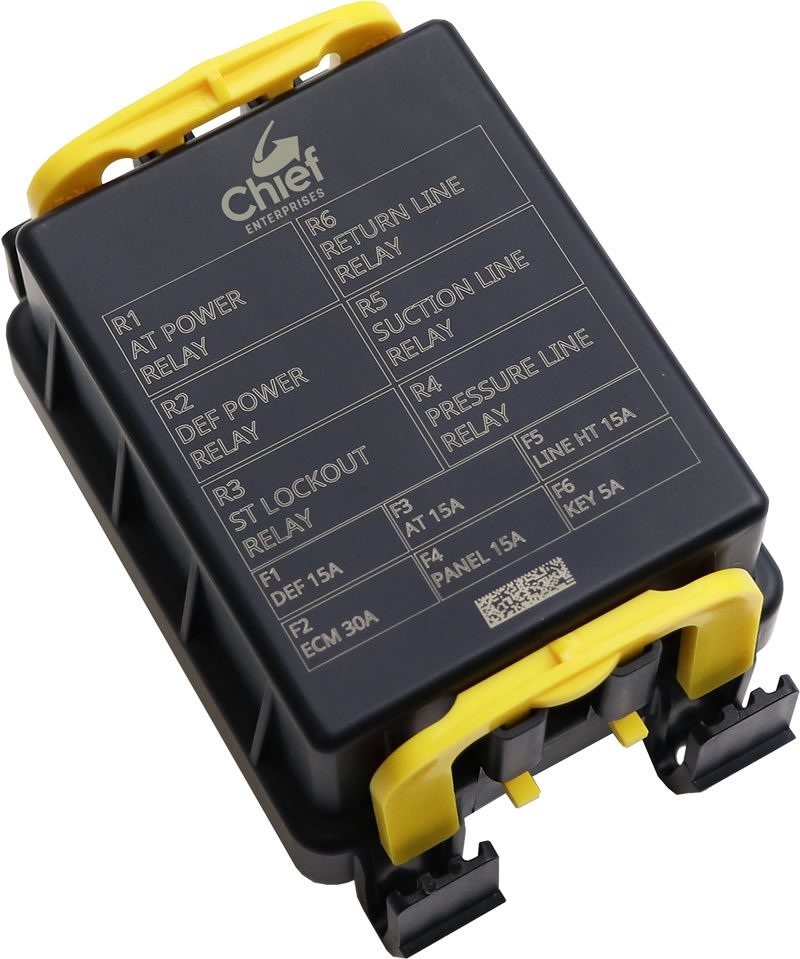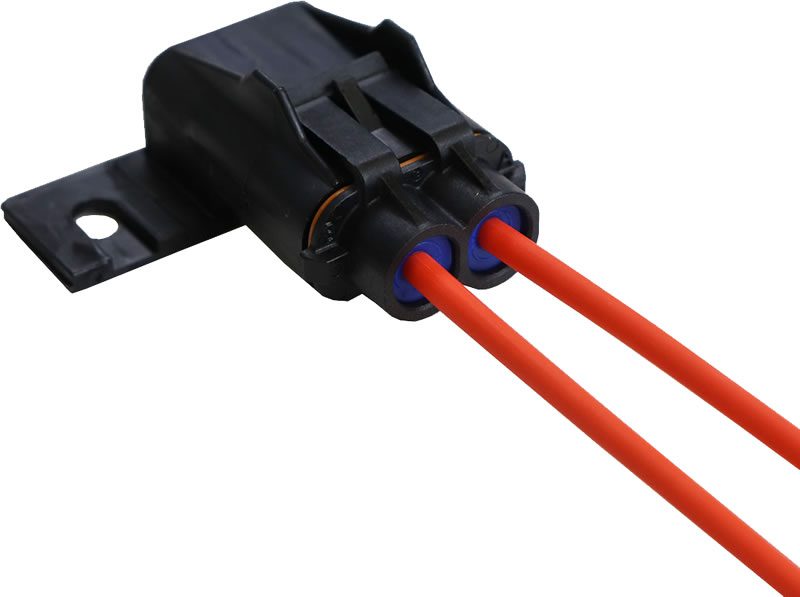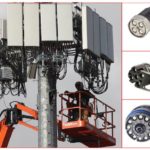Human-Robot Collaboration Boosts Connector Company’s Success
Automation technologies are transforming the warehouse, logistics, and manufacturing worlds. Learn how one company integrated sensors, robots, and artificial intelligence into its manufacturing line to meet new production goals.
The pressure is on: Connector suppliers are being asked to increase production, reduce prices, shift operations out of China, increase component functionality, shrink form factors, maintain abundant stock of products, comply with changing regulations, and help customers design electrified, secure, high-speed, sustainable, reliable, intelligent technologies, including cloud-connected systems, automation, and AI. Whew. Oh, and there’s a labor shortage.

An Epson industrial robot arrives at Chief Enterprises.
An Epson industrial robot arrives at Chief Enterprises.
Chief Enterprises addressed these challenges by bringing automation into its manufacturing processes. In 2021, Chief’s in-house automation and manufacturing engineer, Matt Fuqua, designed a system that integrates sensors, automation, AI, and robotics into the company’s Illinois manufacturing plant operations. With a background in robotics and programming PLCs, he built and programmed a system in which automation robots and humans work in tandem. No jobs were lost and production doubled.

C2500 relay connector with wire leads
“I personally don’t think automation necessarily removes people from their jobs. It’s a tool to create more product with less work,” said Fuqua, who arrived at Chief as the company was struggling to find more people to produce its products. The company has a robust distribution portfolio focused on automotive, power, and heavy-duty components from Amphenol, TE Connectivity, and other suppliers, as well as proprietary Chief products, including its BRIC line of power distribution modules. “The demand for the BRIC had gone up significantly and they were having to take people from other jobs and put them into roles of getting those parts out the door, which wasn’t the best utilization of their talents. So now we have been able to shift them to better roles and use automation for repetitive tasks.”

The BRIC with a laser-marked cover
Two robots, an industrial robotic arm and a cobot, handle customization and quality control tasks on Chief’s BRIC production line, including custom laser etching and customer-specific configurations such as seals. The heavy-duty, high-impact plastic part designed to serve rugged off-road vehicles is available in a variety of configurations and sealing options. Yet the process to create it involves attention to fine detail and stringent quality control. Here, sensor-rich automation processes excel in creating made-to-order products with predictable quality. A servo motor in the robotics arm uses an encoder with a sensing element to track a part’s position on the conveyor belt. A series of laser sensors throughout the system collect and transmit data to enable the robots to correctly maneuver it for etching, inspection, and ultimately packing. The rapid, repetitive process would lead to wear and tear on a worker’s arm, especially given the larger size and weight of the BRIC, but robots don’t get repetitive stress injuries. Meanwhile, the employees are able to use muscles as well as their minds in more organic roles focused on other value-add features on the parts that require human interaction — which ultimately leads to even greater production output, says Fuqua.
“We have two people physically putting them together, but then it goes into a laser etching machine. I bought a Keyence Laser that was much faster than the laser that we were using before. After etching, it goes to inspection cameras. We originally had to do 100% of inspecting to make sure there are no defects. Now we have three different cameras that measure the parts, check for any plastic defects, and make sure the laser etching marking is correct,” said Fuqua.
“The robot picks the part up off the conveyor belt and holds it to a camera that checks the underside of the part that makes sure that all the components are there before we pack it up. That helps make our quality consistent. Then the robot places it where an operator packs it. Right now, I’m working to program the robot to pack the parts too.”
PLACE VIDEO CLIP HERE
On another line, an industrial robot is used for a fully automated assembly cell, placing a seal over a Chief connector. “You still have a person that tapes the boxes when they are full, but in the meantime, they can do something else. This will allow us to grow, especially with building custom machines for our product line. We can really ramp up how many parts we can make, in a relatively short period of time.”

ATO fuseholder and wire lead
Fuqua estimates that automation has allowed the company to double its production of proprietary parts. Meanwhile, the distribution end of Chief’s business is in human hands — including his own, as he uses select products from Chief’s linecard to test and build the automation equipment. He specified Chief-distributed Amphenol connectors and wire terminals for the controls enclosures.
Fuqua is now looking at how AI can contribute to the process. He has already implemented cameras with machine learning capabilities and trained them to distinguish between correct and incorrect forms in the inspection process. “Another thing that I’ve used AI for is programming the robot on the automated line assembly machine, he said. “I have never done software or computer programming. However, using AI, I was able to make a program that communicates to the robot and machine, and sends information to our ERP [enterprise resource planning] system. I’m able to pull data from it — how many parts remain in a day? What was the run rate and efficiency? Were there any errors, and if there was an error, send an email to whoever needs to know.”
Fuqua says that as AI continues to develop, it will find greater utility in other aspects of the manufacturing process. “Being able to use AI and create that application has really ramped up our capabilities in integrating our machines across the business, whether it’s developing programs to efficiently organize our plants — where do we put our shelves and racking? Where do we store our material? What’s the fastest way to pull things off the shelf? What’s the quickest route to go from rack to rack to get everything? Those are some of the things we’ll be able to use AI for in the future. We’ve already dabbled in the AI a bit, and it’s definitely here to stay.”
Learn more about the BRIC and full distribution portfolio at Chief Enterprises and visit the Preferred Supplier pages for the suppliers included in this article: Amphenol (via Chief), Chief Enterprises, and TE Connectivity.
Like this article? Check out our other Robotics, and Automation articles, our Sensors & Antennas Market Page, and our 2023 and 2024 Article Archives.
Subscribe to our weekly e-newsletters, follow us on LinkedIn, Twitter, and Facebook, and check out our eBook archives for more applicable, expert-informed connectivity content.
- Where in the World is Amphenol LTW’s Luc Kan? - April 23, 2024
- TE Connectivity’s Sustainability Efforts Pay Off - April 23, 2024
- What is a VGA Connector? - April 23, 2024





